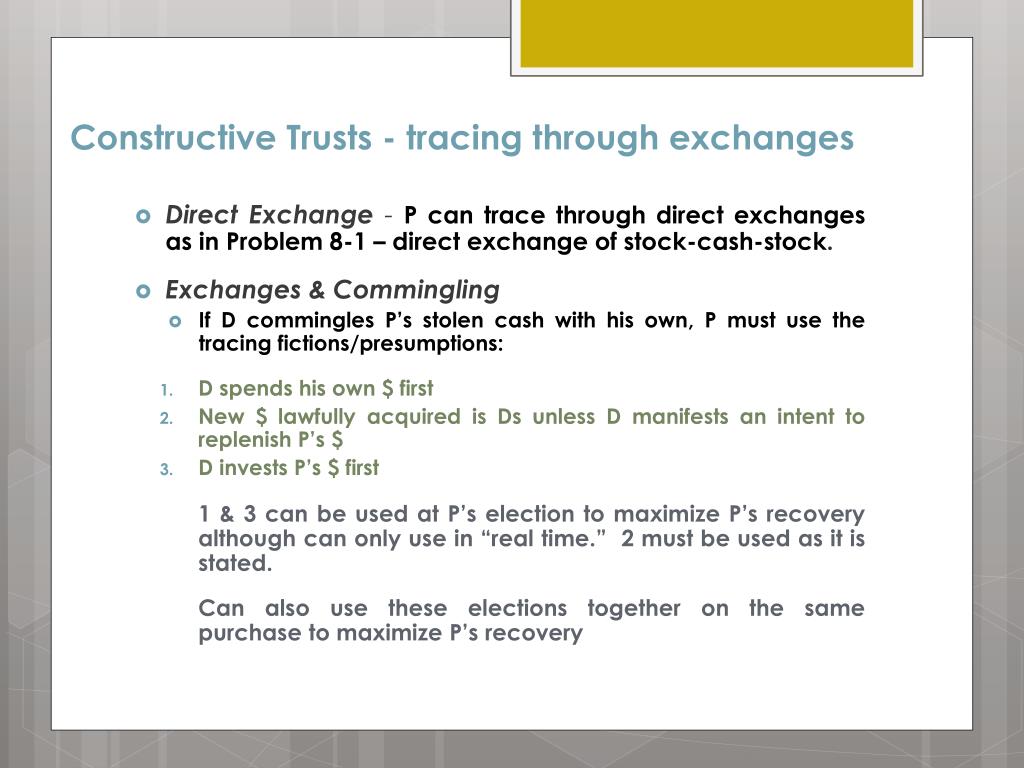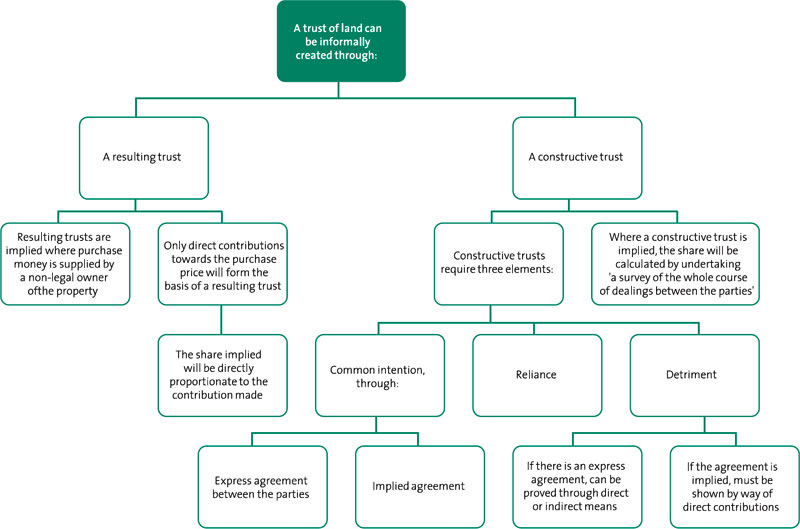Unveiling the Benefits of a Constructive Count On Handling Recipient Problems
The concept of a positive count on becomes an essential tool in the intricate world of beneficiary problems, offering a nuanced option to disagreements that commonly emerge from wrongful residential property retention. By promoting a fiduciary relationship between parties, this equitable solution not only helps with quick resolutions yet likewise serves to hinder potential misbehavior. As we discover the diverse advantages of constructive trusts, one may begin to question how these devices can improve the landscape of estate conflicts and add to a much more equitable circulation of assets among beneficiaries.
Meaning of Constructive Trust Fund
A constructive trust is often developed by courts to attend to situations where one celebration has actually wrongfully acquired or maintained residential or commercial property that rightfully belongs to an additional (What Is A Constructive Trust). This legal principle is not a conventional trust, as it does not require the rules usually connected with trust fund development, such as a composed agreement or the intention of the events entailed. Rather, a constructive trust fund emerges by procedure of legislation, acting as an equitable treatment to stop unjustified enrichment
The courts enforce a constructive depend on when it is identified that celebration holds residential or commercial property under situations that, in equity and excellent conscience, need to not permit them to keep it. Common circumstances entail illegal actions, violations of fiduciary obligation, or circumstances where an event has actually obtained property through improper means. The positive trust fund thus functions to shield the rights of the rightful owner by guaranteeing that the residential or commercial property is held for their advantage.
Once developed, the positive count on needs the event in belongings of the residential property to communicate it to the rightful proprietor, thus correcting the wrongful situation. This mechanism highlights the legal system's commitment to fairness and justice in residential property conflicts, emphasizing the value of ethical conduct in possession and transfer of possessions.
Advantages of Constructive Counts On
Positive trusts provide a number of considerable advantages in legal disagreements including residential or commercial property legal rights. Mostly, they work as an equitable treatment, permitting courts to deal with situations where a party has wrongfully gotten or preserved home that truly belongs to another. This develops a structure for fairness, making sure that the rightful proprietor is compensated and the unfair enrichment of the wrongdoer is reduced.
Moreover, constructive trusts can expedite resolution in problems over estate properties, thereby decreasing the prolonged and frequently contentious litigation processes connected with typical home disputes. Their adaptability allows courts to tailor solutions to fit the details circumstances of each case, which can bring about even more sufficient end results for all parties involved.
In addition, positive trust funds advertise transparency and liability among fiduciaries and beneficiaries, as they need the latter to act in the very best interests of the former. This strengthens the stability of fiduciary relationships, fostering depend on and cooperation. By inhibiting transgression relevant to building ownership, constructive trusts add to the general security of monetary and lawful systems, making sure that home rights are respected and upheld within culture.
How Positive Trust Funds Job

In practice, when a constructive count on is enforced, the court identifies the home concerned and develops a fiduciary partnership between the events included. The party who holds the building ends up being a trustee, obliged to handle it for the benefit of the rightful proprietor, called the recipient. This connection is not based upon a formal arrangement but rather on the concept of equity, intending to remedy circumstances where one event's gain directly correlates with one more's loss.

Study and Instances
When examining the useful application of positive depends on, different instance research studies highlight how courts navigate complicated circumstances entailing unjustified enrichment. One notable case is * Pettkus v. Becker *, where the Supreme Court of copyright developed a constructive count on to remedy the unfair enrichment of one celebration over another in a lasting partnership. The court established that the contributions of one partner to the purchase of building justified the imposition of a useful trust fund, ensuring fair distribution.
Another significant example is * Gisborne v. Gisborne *, where the court imposed a useful depend on to address the claims of siblings over their deceased sibling's estate. The court recognized the payments made by the siblings in preserving the family members residential property, bring about a choice that called for the estate to account for those contributions, therefore preventing unjust enrichment.
These cases exemplify how useful depends on can properly settle conflicts by this post concentrating on justness and the avoidance of unjustified enrichment. By taking a look at the details payments and situations of the parties involved, courts can use constructive depend attain simply end results, inevitably strengthening the equitable principles underpinning these legal systems.

Steps to Develop a Useful Count On
To establish a positive count on, a number of key actions must be complied with to make sure that the insurance claim is validated and lawfully acknowledged. The complaintant has to demonstrate the existence of a fiduciary connection or a scenario that calls for the charge of a constructive depend on, such as fraudulence, unfair enrichment, or a breach of responsibility.
Second, it is crucial to gather and present compelling evidence that sustains the case. This includes documents and statements that show the situations resulting in the alleged wrongful retention of residential property or advantages by the trustee.
Third, the complaintant needs to submit a request in the appropriate court, articulating the grounds for requesting the imposition of a positive trust. This application needs to outline the specifics of the partnership and the unfair enrichment that YOURURL.com demands the trust.
Conclusion
In conclusion, useful counts on stand for a vital fair solution in the world of beneficiary disputes, efficiently resolving wrongful residential or commercial property retention and preventing unjust enrichment. Eventually, positive depends on promote justness among beneficiaries, ensuring that rightful possession is kept and protected.
A useful depend on is regularly established by courts to resolve circumstances where one party has wrongfully obtained or retained residential or commercial property that rightfully belongs to an additional.The courts enforce a useful count on when it is identified that one celebration holds home under situations that, in equity and good principles, need to not allow them to maintain it. By discouraging transgression associated to home possession, useful counts on contribute to the overall stability of lawful and economic systems, ensuring that residential or commercial property rights are valued and maintained within culture.
In practice, when a positive depend on is enforced, the court determines the property in inquiry and establishes a fiduciary relationship in between the celebrations involved. What Is A Constructive Trust. The court established that the contributions of one companion to the acquisition of residential property validated the imposition of a useful trust fund, guaranteeing fair distribution